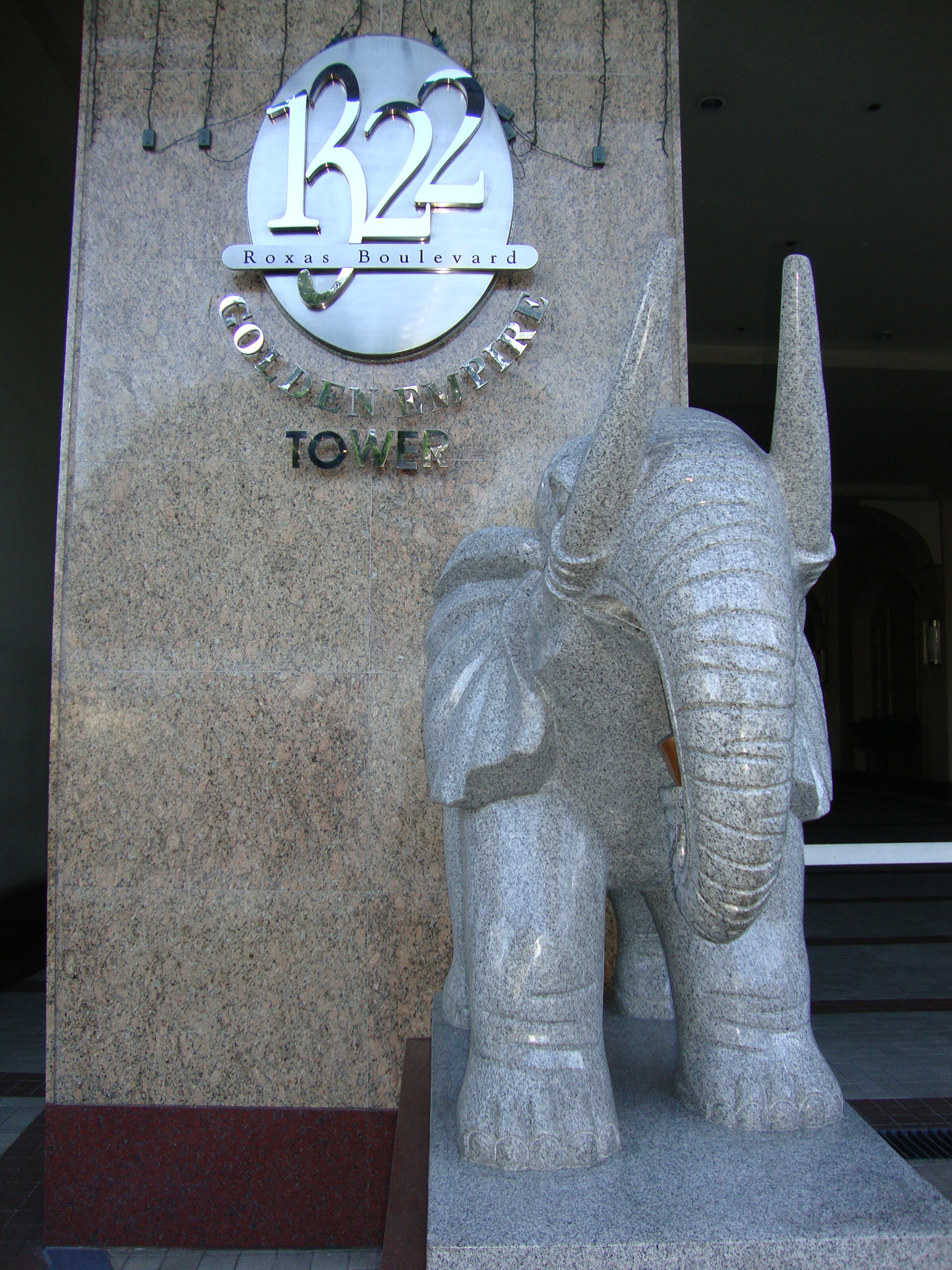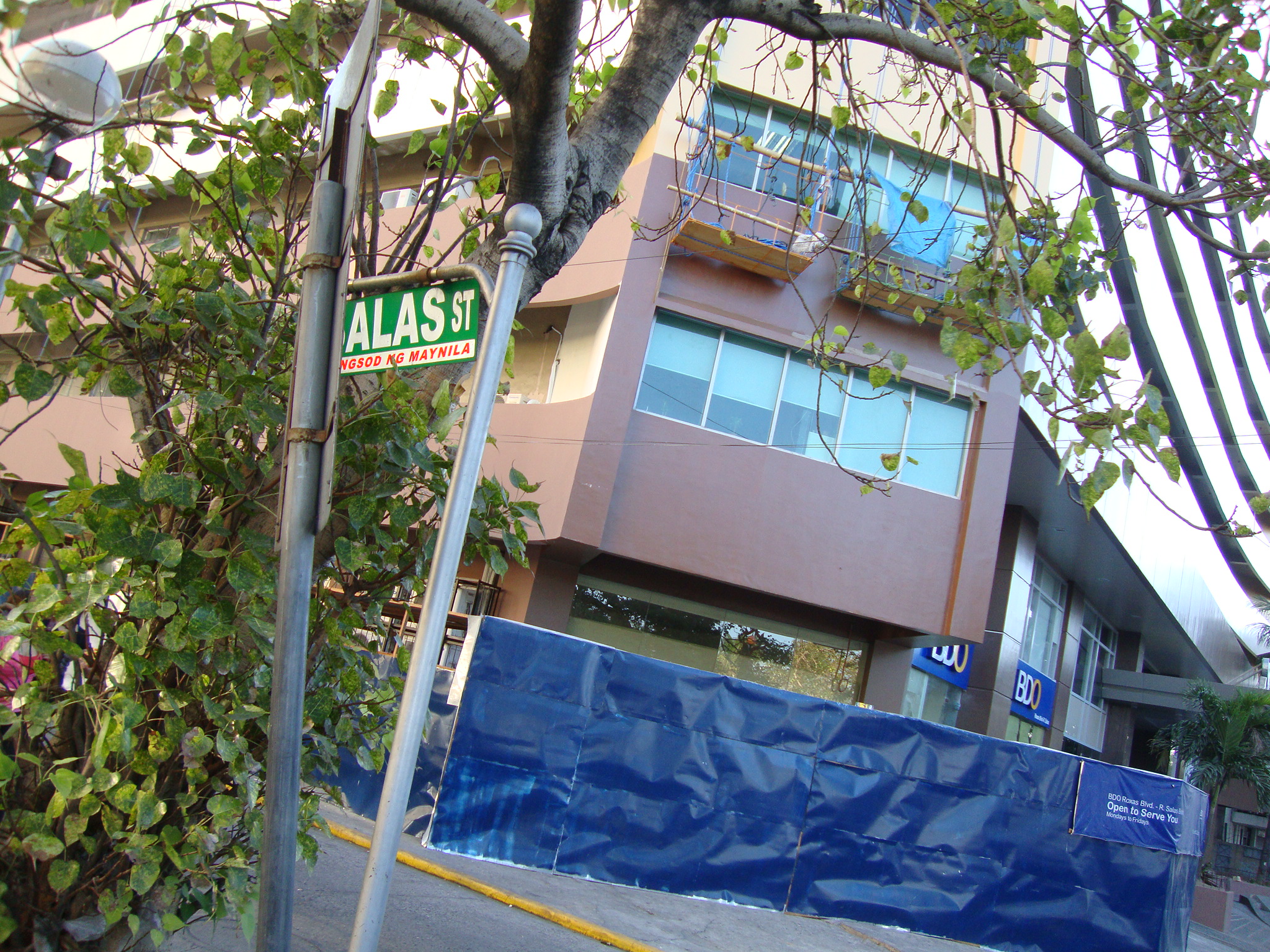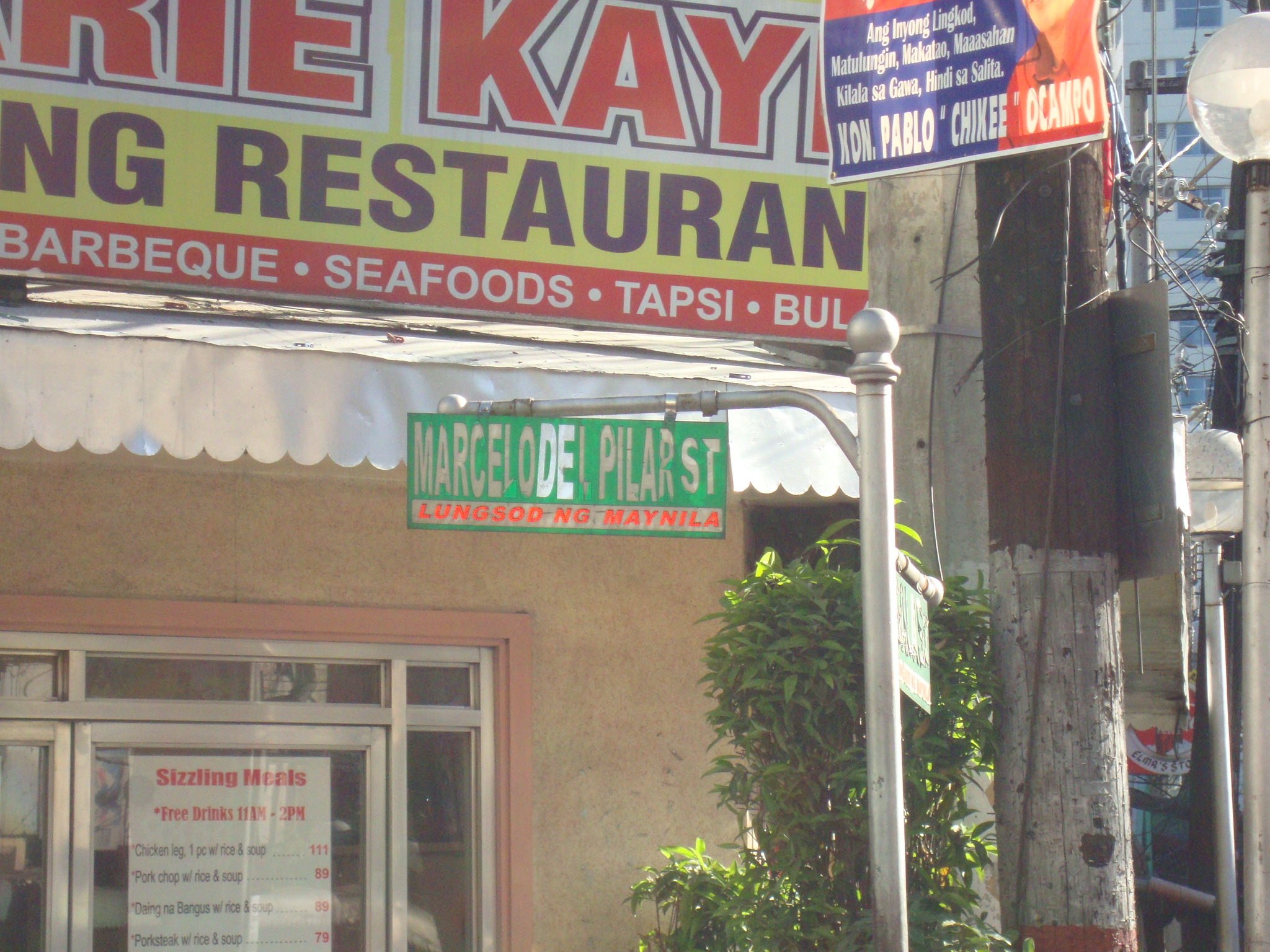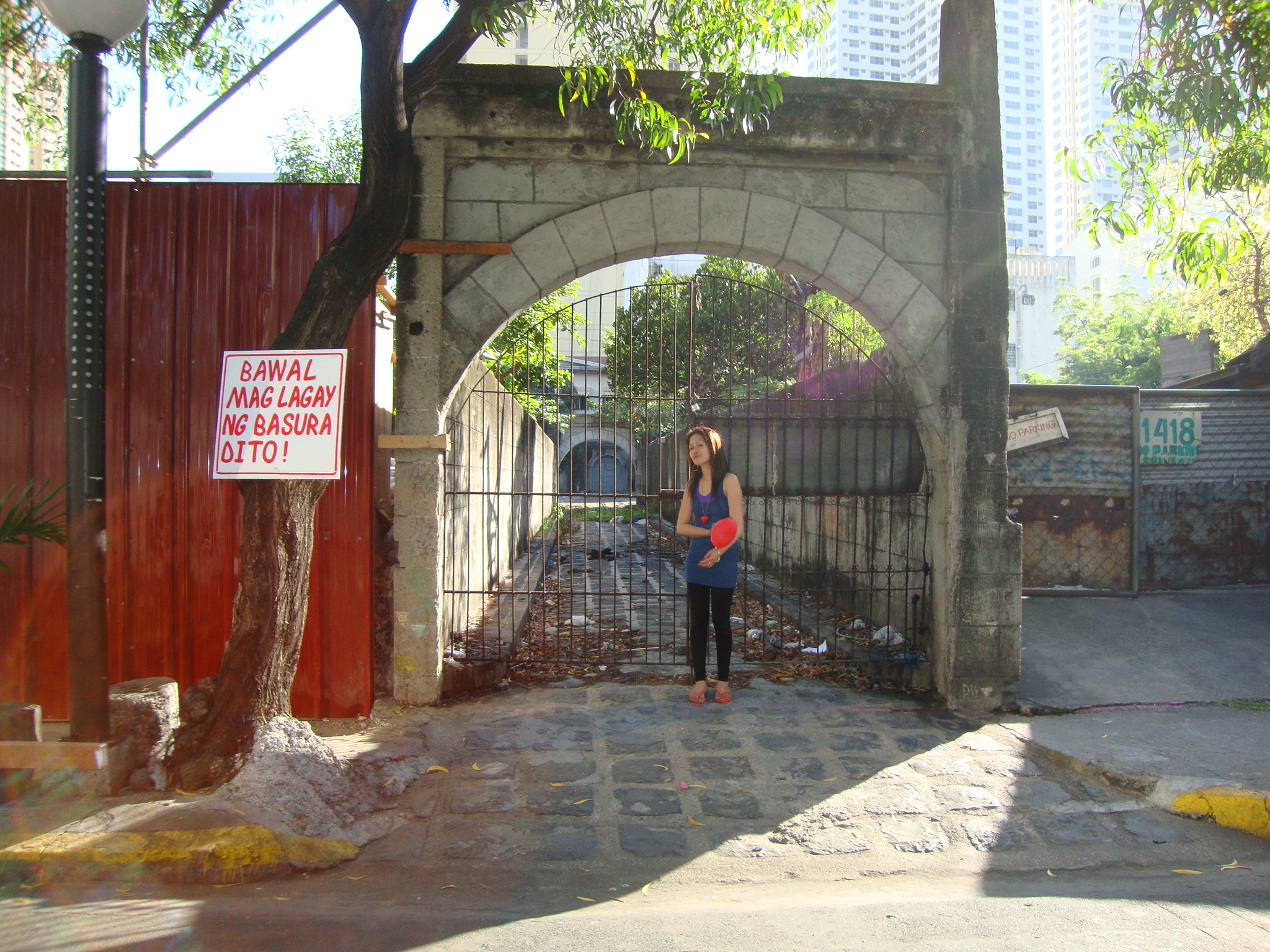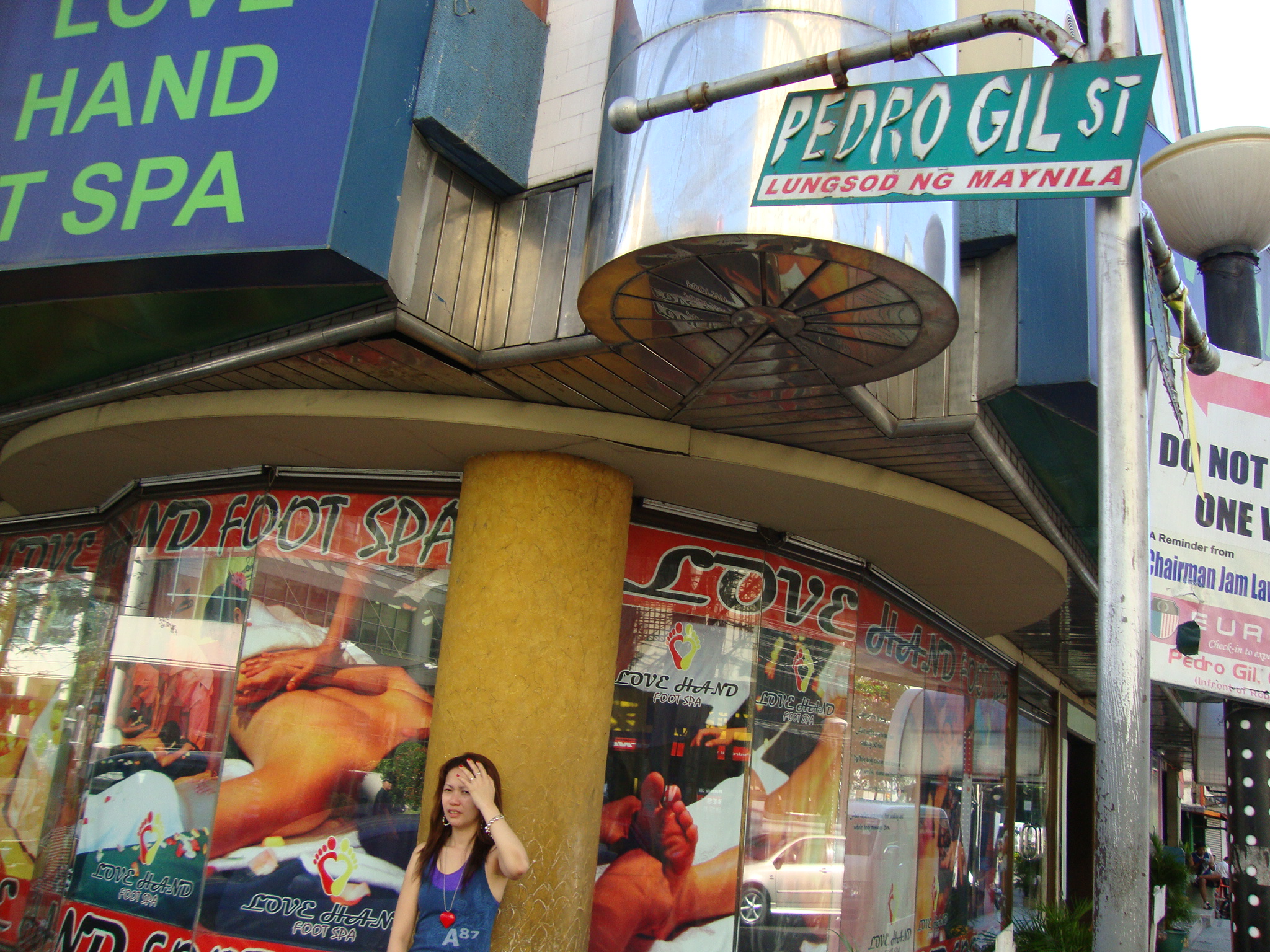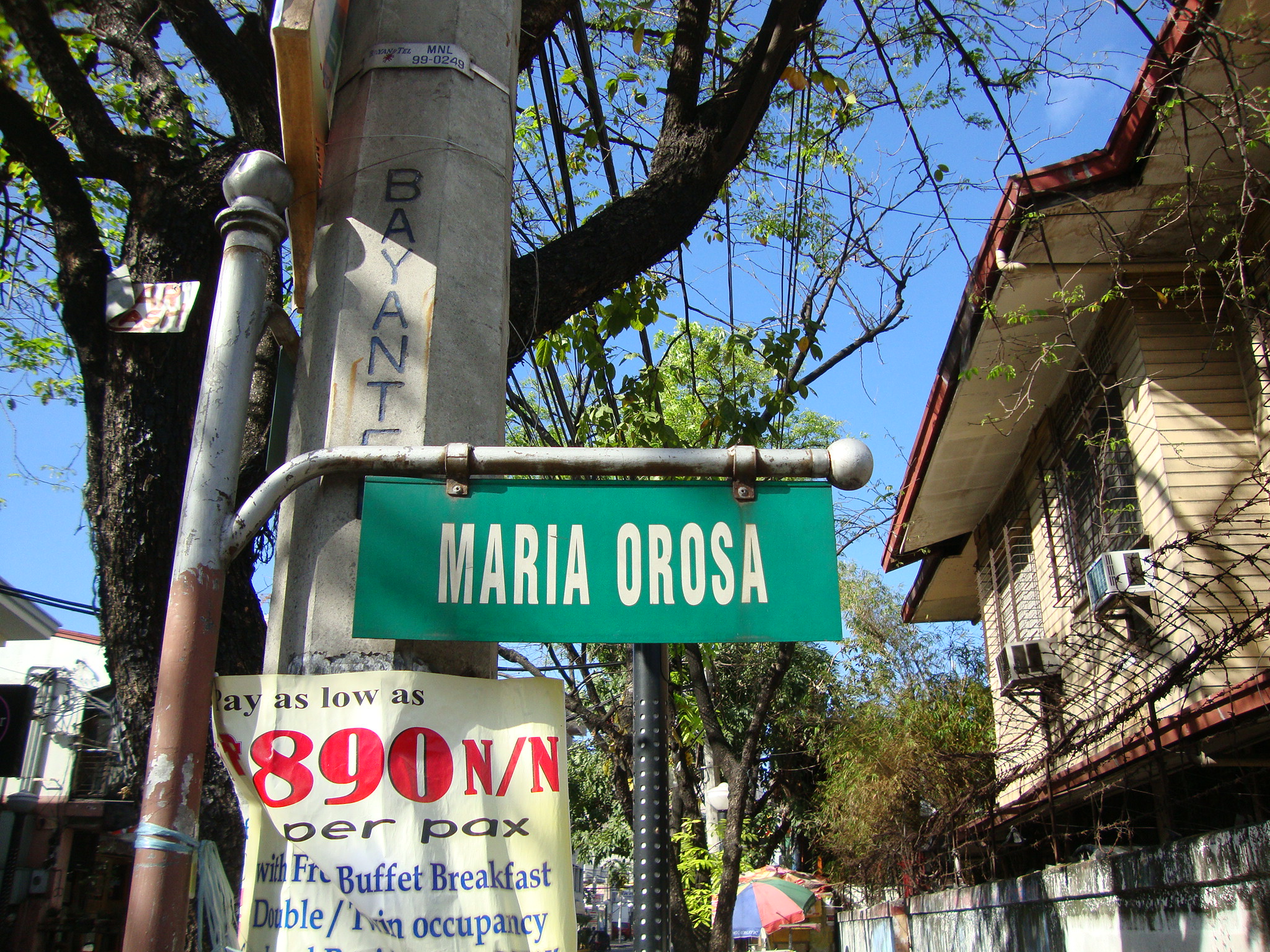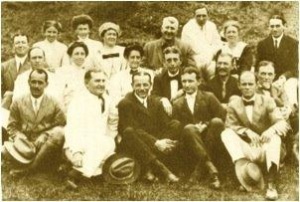Ladies and gents, I proudly present to you Ikon, Friar and Conquistador, one of my favorite essays from the country’s best English-language writer, the late great Nicomedes “Nick” Joaquín (National Artist for Literature and a good friend of Señor Guillermo Gómez Rivera). If I’m not mistaken, this essay was written and published during the 1960s. It was recently included in CULTURE AND HISTORY, a collection of Nick’s essays published by Anvil Publishing, Inc. (2004). Ikon, Friar and Conquistador explains most of what we have been fighting for all these years…
IKON, FRIAR AND CONQUISTADOR
Nick Joaquín
The Filipino is most Christian when he doubts that he is, just as the saintly are those who know they are not. A saint thinks himself the blackest of sinners; the moment he thought himself a saint he would cease to be saintly. What a Christian culture creates is a self that’s forever examining, questioning, doubting, denying and confessing itself. The paradox of the Christian is that he must achieve selflessness through maximum self-consciousness. There must be a self before it can be denied. The will must be strong that has to be curbed.
The Christian Filipino is self-conscious, is intensely, tormentedly aware of himself in a way that, say, the Igorot and the Moro are not — and may the statement give no offense, since its point is not that the Christian Filipino is better but, rather, that he sees himself as worse. He winces when he hears his country described as “the only Christian nation in the Far East.” He looks around him and sees only greed, graft, vileness and violence, and he sneers: Is this Christianity? He questions the value of religious instruction for his children; he deplores the folk pieties of the ignorant; he concludes in despair that the Faith is a foreign irrelevance that hasn’t touched his people. Some may see in such attitudes a decline of Christianity. Others may hail them as a triumph of the Faith, for the Christian affirmation is not, after all, Thank God, I am not like this Publican here but O Lord, I am not worthy.
If the Christian religion were to disappear, from the land, we would still remain Christian, not necessarily by being good but even in the way we are not good: that is, in the quirks and qualities of our character. The Faith has so formed us that even those of us who have left it still speak and write within its frame of reference, still think in terms of its culture, and still carry the consciousness of a will and a conscience at war that so agonizes the Christian. For good or evil, our conversion to Christianity is the event in our history.
We might be happier if we had remained within the tribal obedience (as the highlanders of the North and the Muslims of the South have done to this day) but we ourselves deny this when we argue that, even without Spain and the Faith, we would sooner or later have emerged from tribalism. The Conversion shattered for us the Magian cave of Tribe, from which we emerged Faustians, still infant Faustians it may be, but already evolving the infinite I within, which we call soul, and the infinite we without, which we call nation. Lapu-lapu was a patriot in the old reasonable sense, defending a local habitation he could personally encompass. But the nationalist is a madder chap. He worships and will defend a mystical extent of space that ultimately has no boundaries.
It would take some explaining to make a Badjáo see how he is bound to defend the waters of faraway Bolinao, or to make an Ilongot understand that Pagadían is also his homeland. These things can be taught in school, but they come by instinct to those born to the culture. The Christian Filipino who has never seen either Bolinao or Pagadían, who may not know even where they are and couldn’t care less, will still, without question, go and die in their defense, as he would die for his own home, because they, too, are his own land. He will even, in defense of the homeland, fight outside the homeland, as Filipinos have fought in the Solomons and the Marianas, because the nationalism he carries in his blood is boundless. This seems starkly clear to us, but it’s mysticism gone mad to a tribesman, whose loyalties coincide with the boundaries of his tribe. If he fights beyond, he fights as an ally, but not for a nation.
When we argue that, left to ourselves, we would, nevertheless, have evolved a confederation of tribes that in time would have become a nation, the testimony of 400 years is against us. In the last 400 years, the Philippine tribes that were left to themselves have never even approached the idea of union. The highlanders of the North, for instance, did not fuse into one nation in the mountains vis-à-vis the Christians in the lowlands. Nor did the Cagayán Valley become the empire of the confederated Ilongot tribes, whom we find, instead, to this day, still at war among themselves. And in Mindanáo, even Islam, a potent unifier, failed to unite the tribes that turned Muslim, though the Spanish campaigns against them should have made confederation inevitable. The Greeks, whose tribal city-states were similar to ours, and who suffered from an equally disjunctive localism, almost became a nation when forced to unite against the might of the Persian Empire. But the Moros stuck to the private small-scale raid. We try to ennoble those raids today as efforts on the part of our Muslim brothers to liberate us from Spanish rule, though the evidence is that, then as now, the raids were purely for slave and booty, and were thus resisted by the folk supposed to be rescued; but how glorious if there had really been a countercrusade from a Mindanáo organized under one leadership to liberate the land, and sending a mighty fleet northward for a new Battle of Lepanto! But the native aversion to the large effort made such a dream impossible, and the Moros, instead of confederating, have merely split smaller, until we hear of tribes that must have begun as one shredding into as many as 33 sultanates within a single province.
This should tell us that a will to unite and a sense of nation do not evolve inevitably, “sooner or later,” not even when spurred by the force of circumstances. Considering the 400-year failure in this matter of the tribes left to themselves, and considering also the local diversity of tongues and cults, the unification of the rest of the country must seem nothing less than a miracle, and that achievement the basic fact of our history, since any historian would regard the epoch during which that labor was undertaken as our most crucial moment, when the Conversion made us this people and this nation. But we find ourselves being told today that those years of conversion and unification —the 300 years of Spain in the Philippines— are not our history, are of no import to us, are irrelevant and can be omitted from a true history of the Philippines, with the example cited, to prove the point, of the omission by certain Spanish historians of the Moorish period from their histories of Spain. But this example, instead of proving the point, disproves it.
Despite 800 years of the Moros, Spain did not become a Muslim nation but rather emerged from the occupation more fiercely Catholic than before, and can therefore be justified in ignoring the Moorish period as irrelevant since it wrought no radical reformation of Spanish culture. But let us assume that Spain did become Muslim because of the Moros — Muslim in faith, Muslim in culture: would a modern Spanish Muslim historian dare ignore as irrelevant the event in his history that made his nation the unique thing it is — the only Muslim nation in Christian Europe? Would he dare call the Moorish occupation, however hated it may have been, irrelevant to the development of his Muslim people? Or would he not rather say that the invasion was the starting point of his Muslim people’s history and the Christian years that preceded it the irrelevance?
Or to cite a closer example: If a historian finally emerged among the Philippine Moros, would he dare say that the coming of Islam to the Philippines was of no import and the conversion of his folk to the Crescent an irrelevance in the history of his tribe?
If we had emerged from the 300 years of Spain not Christian in faith nor Christian in culture we could dismiss those 300 years as an irrelevant interruption of our history. But since it was those years that shaped what we are today, it’s as impossible for us to reject them as for a tree to cut off its roots. This is the vital difference between the Spanish era and the American interlude. The latter was, like the British and the Japanese occupations, an interruption, which we now seek to annul, because we know that’s possible, having realized it’s not mainstream, as we used to think. But even the nimblest of historical wizards may find it hard to skip Spain and the Conversion and still tell a coherent Philippine history, since he would have, at one moment, a welter of warring pagan tribes and, in the very next moment, a people calling itself Filipino and fighting for its nationhood under the banners of the Cross, the Enlightenment, the French Revolution, and the Constitution of Cádiz.
What happened in between is too vital to skip, as vital as the forces —religious, cultural, political— that made it happen, and which may be represented by the three figures that loom on the stage of conversion: the Santo Niño, Fray Andrés de Urdaneta and Don Miguel de Legazpi. When we started to take off as a nation, after ages of static tribalism, we had for propulsion the triple thrust of Ikon, Friar and Conquistador.

The Santo Niño icon of Cebú.
The Santo Niño makes so perfect a symbol of Philippine Christianity because it came with Magellan, became a pagan idol, was reestablished by Legazpi, and has become so native that native legends annul its European origin by declaring it to have arisen in this land. The process was already in motion even in the days of Rajah Tupas. Within 44 years after its arrival, the Ikon had become so accepted no one remembered it any longer as having come from outside. The Cebuanos sent to Legazpi to ransom the image, offering any amount of gold for it, declared that it had been with them for ages and had been their god from time immemorial.
One legend has it falling from the sky; another has it rising from the sea; but both sea and sky are Philippine. The legend that recounts how futile were the efforts to hack it to pieces may be mythic shorthand for the vain war waged against it by native priestesses during its 44 years as the last and greatest of our pagan gods. The translation into Christian worship of the rituals with which it was worshipped as a pagan god, and which survive to this day, is the first and still the best example of folk Catholicism, a fusion of the Christian and the pagan that reveals how the Church triumphed in the Philippines: by assimilating and preserving (as it did in ancient Rome and heathen Europe) whatever of the old cults it could Christianize, so that not only the Pit Senyor of the Santo Niño but similar pagan rites like the tatarín of Manila, the turumba of Páquil, and the ati-atihan of Aclán have survived under the auspices of the Church. It’s ironic, therefore, that those who look back with such reverence to our pre-Hispanic culture should be the loudiest sneerers at Christianity in the Philippines as being mere folk Catholicism, or superstition. They mourn for being lost what they attack for surviving. When they decry the town fiesta they are decrying the old pagan harvest festival, which, as may be observed in the highlands of the North, also entailed open doors, loaded tables and a lot of conspicuous consumption.
That Christianity in the Philippines, like the Santo Niño, adapted itself to paganism, to reach our pagan minds, should cause no surprise, since history shows that the Faith becomes primitive again with every primitive people. It carried all Greek learning within it when it reached Europe, but in Europe, during the Dark Ages, it became a magical nature religion. To the Gauls of the time of Clovis, Christ was not the highly metaphysical Greek Logos but simply a great witch doctor, who proved the potency of his magic by rising from the grave. Centuries has to pass before Christian Europe could produce an Aquinas, a Francis, a Teresa. The Faith respects the human process; and even as Christ himself began as a baby, so every Christian nation begins in spiritual babyhood, with naïve faith. The Philippines, too, had to undergo, is still undergoing, this spiritual childhood, because human processes are gradual, and we cannot, in the wink of an eye, shed all the previous pagan ages. So, the Santo Niño was willing to become a pagan god for us. Yet we hear the charge that violence was done to the Filipinos when a faith alien to his culture was thrust upon him.
Rizal lamented that his people were converted to a religion they did not understand. It’s absolutely sure that the early native converts understood the Faith no more deeply than did the Gauls or Goths of Europe; but if the same argument had succeeded in stopping the introduction into Europe of an alien Oriental religion the world would not have had Chartres or Giotto or Chaucer of Michelangelo. We complain that our forefathers suffered in assimilating forms of culture not native to them. Absolutely. Learning is not an easy process, as our proverbs (“Burning one’s eyebrows”) warn. But if man had limited himself to what was easy because familiar, he would still be in the caves. It’s the accepting of the challenge of the new, the unknown, the alien, the mysterious, that has unlocked wilderness, ocean, the atom and outer space. None of these things came easy; why should Christianity?
We sneer that the Filipino is no more virtuous today than 400 years ago, and that the Faith has had, not only no moral, but no social effect on us. But even the gradual evolution of the Faith in the Philippines has been in the nature of a revolution. The Filipino woman of today, for instance, is not quite the same as the women that Pigafetta and the other early explorers described. And even the modern Filipina who asserts that her pagan ancestress was actually nobler, because uninhibited, would balk at restoring the old uninhibited practices, like getting a daughter deflowered at puberty or making her little boy wear a nail through his phallus. The Filipina may still try to keep men under the saya, but not in such literal sexual subjugation as symbolized by the fettered phallus.
That there was a revolution can be seen by comparing our Christian and pagan arts. When the Club Filipino organized such a comparative exhibit of our pagan and Christian arts in juxtaposition, one could see at a glance how the static forms of paganism —stolid, squatting, expressionless figures— were succeeded, in Christian times, by forms in dynamic motion: gesturing hands, advancing feet, upturned heads, vivacious faces and whirling draperies. The most startling juxtaposition of forms was of the Pregnant Woman, an immemorial Philippine motif that evolved, with the Conversion, into the Pregnant Virgin. But glancing from the pagan to the Christian version, one was amazed to see how forms so similar could be so different. What one saw was not evolution but revolution, the static becoming ecstatic. For the pagan Pregnant Woman —stolid, squatting, expressionless— seems rooted to the ground, earthbound; while the upright Pregnant Virgin, so graceful though so gravid, and leaning impulsively forward, as though about to run a race or take off for the sky, seems the very epitome of the liberated spirit. The testimony of yesterday’s art refutes today’s reading of history. Our folk art records a transfiguration as remarkable as that moment in Greek art when classic serenity, disturbed, became Byzantine rapture.
In this, the Philippine folk artist is not a solitary witness, for our reception of the Faith was indeed not uniformly naïve. Within a century after Magellan, an authentic mystical movement had already appeared in Manila, contemporary with and of the same spirit as the metaphysical movement in 17th-century Europe. The lives of these natives anchorites and contemplatives who founded the beaterios, organized the Third Orders and formed the confraternities, indicate how deep and swift the impact of the Faith was. Yet no study has been made of this movement as a whole, fascinating and significant though it is, because we scorn our own history. The history of the beaterios is surely not the history “of Spain in the Philippines” but of the the Filipino as Christian; and it reveals the revolution being wrought in his country, in his society, in his character.
The testimony offered by folk artist and folk mystic should cause second thoughts among those who assert that the Conversion was no event in our history. It was —and is (for it’s still in progress)— an event not only in our history but in our very souls; and when we confront it we confront the friar, who started the act that’s still transforming us. But the friar also played an earthier role in our history than as missionary, and could just as well be portrayed with wheel and seedling as with cross. Economically he was our culture hero.

The Augustinian friar Andrés de Urdaneta.
Urdaneta makes so perfect a symbol of the friar in the Philippines because he could just as well be depicted raising the Compass as the Cross. To the Conversion, as to Legazpi, he was Chief Pilot; and he was Renaissance Man in all his awesome vitality: sailor, soldier, explorer, adventurer, and yet combining with the man of action the man of thought, otherworldly and God-haunted, afflicted with his epoch’s ‘fever of the marrow’ and suddenly abandoning the world, like so many adventurers of his time (Charles V, John Donne), to vanish into the cloister and there start still another adventure, another exploration, this time in the realms of the spirit. Summoned from the cloister by his king, he willingly set out on a final expedition, though already in his 60s, and guided Legazpi’s armada to the Philippines, where he built the first church, enthroned the Santo Niño, baptized his first converts, was the colony’s first spiritual head. Then he performed a final feat: discovered a safe return route across the Pacific to Mexico, after which he vanished again into the cloister, where he died in obscurity, a man whose voracity for experience the whole world could not satiate, and who therefore yearned beyond. Plus Ultra!
Only heroic ages can produce a clergy in the grand style, not dainty curates, but warrior-priests like Urdaneta, men of the world and of their time, though transcending both. But the challenge of the Philippines, of the Orient, was picked up by a host of such mystic men of action. The Franciscan Pedro Bautista came to the Philippines during the Conquista, built the first church in San Francisco del Monte, ranged Southern Luzón, then dashed off to new frontiers in Japan, where he was martyred; is now honored on the altar as a saint. The Dominican Francisco de Capillas explored the wilds of Cagayán, evangelized the North, built and baptized, then went off to dare the perils of China, is now honored on the altar as a martyr. Of such steel were the athletes that evangelized the Philippines.
Into our soil, the friar poured his blessings. He shaped our economy by what he put in; and our history to this day, and our daily lives, are determined by the crops that he brought in: tobacco, maize, cotton, coffee, cocoa, naranja, guava, melon, sincamás, achuete, avocado, pineapple, chile, peanut, squash, cabbage, tomato, industrial sugar, and so on, and so forth, ad infinitum. We hear of convent yards that were veritable plant nurseries, where imported seed was tried out, nurtured, bred, crossbred, developed, and then given out for general culture.
The revolution here can be appreciated if we imagine that most typical of Philippine scenes: a carabao pulling a plow. We think this “immemorial,” but it isn’t. The pre-Hispanic carabao was a meat, now a work, animal. Tilling, planting, gathering then were all done by hand, which necessarily limited what a farmer could produce. The friar brought wheel and plow here and he turned the carabao into a draft animal, to pull the plow, to pull the cart. This lifted a mountain of labor off the farmer’s back and expanded his ability to produce.
If this had happened in an earlier age, myth would have turned the friar into a generic culture hero depicted, like Ceres, with a crown of vine leaves, seedlings in hand, and enthroned on crop sheaves. Thus the Greeks developed a generic figure, Dionysus, for the culture hero (probably from Asia) who brought them the culture of the grape. Thus the American Indian developed a cult to the god who introduced corn and tobacco to his land. Thus might we have had a culture hero called Parecura, a nature god that came out of the sea to bring us corn and roses, beans and spices; who gave us the wheel and the plow, the horse and the cow, the goose and the turkey; who built dams to check our rivers and canals to irrigate our fields; who flung roads through jungle and mountain and bridges across rivers; and who fixed on paper the turmoil of our tongues and scripts. For Parecura was not only a god of agriculture; he was also, like Apollo, a god of art, music and learning. He trained our wood carvers and painters, taught us architecture, developed our singers and musicians, gave us books on our flora and chronicles of our land, showed us how to dress food and how to tailor clothes, and gathered us together, made us one, with the magic sound of his bell.
The marvel here is that this is not myth but history, our history, though we now insist it’s only the “history of Spain in the Philippines.” But was our entrance into wheel culture an event in Spanish or in Philippine history? Was the introduction of corn and tobacco, of horse and cow, an event in Spanish or in Philippine culture? Was the rise of the native baroque church and house (which are neither Spanish nor Mexican) an event in Spanish or in Philippine society? Was the romanization of our script and the introduction of printing an event in Spanish or in Philippine letters? Was the native santero and event in Spanish or in Philippine art? And was our learning of the guisado an event in Spanish or in Philippine life?
We contend that we would have gotten or learned all these things anyway, eventually, sooner or later, even without Spain and the friar; and we point proudly to the international contacts we had even before Magellan. But what’s so noteworthy about those contacts is how little they did for us. We hear of ships from Siam or China or Java or Arabia sailing to Cebú to trade, but we don’t hear of ships from Cebú, or even from Manila, going to Siam or China or Java or Arabia to trade. This international trade we boast of was so one-sided it can hardly be called trade, since our role in it was purely passive: the folk to whom the trade happened, to whom the traders came, and from whom the payment exacted were slaves or the right to work local mines. Not until the Galleons was our country to play an active role in trade, on a global scale, for Manila became the point of exchange between East and West.
All these cultures we were in contact with were already wheel cultures, but none of them seems to have had the charity to introduce us to the wheel. We had to wait for the friar to do that. They were already building in brick and stone; did any of them care to instruct as in the art? Was a Javanese-style or a Siamese-style temple ever built in the Philippines to serve as model? Not untli the friar came and discovered the possibilities of our adobe did we develop an architecture of our own. We are age-old neighbors of the spice islands, yet never had a spice culture of our own until the friar tried to give us one. The Chinese, we have always had with us. They killed our pottery with their porcelain; did they at least have the goodness to teach us their ceramic secrets? They have always been famed for their cooking, did they teach us how to dress food? They sold us silks and other fabrics; did they ever teach us how to make them? The Arabs were then, vis-à-vis Europe, in the position of Russia today vis-à-vis America – that is, the rival culture. Yet what of Arab culture, aside from its faith, ever actually reached us? The Arabs had great armies and navies then. We say we were in contact with them; but we were still fighting with bow and arrow — with bows of poor tensile strength and arrows unshafted with feathers. Couldn’t the Arabs have trained us in their style of warfare? Or they could at least have brought us the horse, for which they were famous. Did they? Only in the present day has the mother realm of our South deigned to establish cultural interchange with our Muslims.
All the things that the Javanese and Chinese and Siamese and Arabs could have brought us, could have taught us, we had to wait for Spain and the friar to bring us, to teach us. If we had relied on the Javanese, Chinese, Siamese or Arabs to help us advance, we might still be — as indeed the highlanders of the North and even the Moros of the South still are — in a prewheel, prestone, pretrade and prebook culture.
Moreover, Spain’s economic legacy was as nearly disinterested as any act in this selfish world can be. We cannot say that sugar was developed here because Spain needed a sugar bowl, or that tobacco was introduced here to give the Carmens of Seville employment, or that the copra and hemp industries were established to feed the mills of Madrid and Barcelona. In the nearly four centuries under Spain, we never had what might be called a colonial economy, tied to the factories and markets of the mother country. When we broke away from Spain we did so with no fear of economic upheaval, because we were economically independent of her. But in the next years this independent economy was to become a colonial economy, so tied to the markets and factories of the United States that, even today, several decades after political independence, we are still, economically, an American dependency, and tremble to think of the upheavals that separation would cause.
The funny thing is that the Americans introduced into this country not a single crop that may be said to have transformed our economy and affected our history, like the crops that Spain brought. Nor was the existing economy developed save to serve the interests of the American market. During the war, the Japanese here ostentatiously planted Virginia tobacco, asking us, with a leer, why the Americans never developed a Virginia tobacco culture in the Philippines. It was then that a prewar vaunt —“More progress in 50 years under America than in 300 under Spain”— became so hollow as to make one wonder how it could ever have been believed. For we are, today, still vexedly trying to undo the effects and solve the problems caused by that “progress” made under America; but on what Spain brought and planted here depend our lives, trade, culture, progress and history for all time to come. The wheel brought here is in permanent revolution, is dynamo.
The friar planted crop after crop with no thought of how this might be to the benefit or detriment of the mother country on the other side of the world. He was not thinking of the mother country, he was thinking of “this republic,” as he loved to call the Philippines. “Esta corte” and “Esta república” resound repeatedly from his pages. He was —consciously or not— creating the idea of an independent realm. And everything he did increased that independence. Those crops he planted created economic independence. His revolt against the authority of his superiors in Spain resulted in independent friar provinces for the Philippines. His propagation of the dialects instead of Spanish — whatever his reasons for disobeying royal orders in this matter — bred an independent Philippine Christian culture that’s not merely a mirror culture of the Spanish or the Mexican. He organized our dialects into grammars; opened up and mapped our lands; and pulled us out of the mists of folklore into the ear of written history. The churches, roads, bridges, dams and irrigation systems he built, we are still using today. From any viewpoint, his is one of the great civilizing labors in the history of mankind.
But the friar as culture hero shared the fate of Dionysus, who was destroyed by the same folk that hailed him for his gift. Like Dionysus, the friar was, in the end, torn to pieces by the women. They were his first foes when he first came; but in subduing them, he succumbed to them, and perished. But culture heroes all have a tragic end — Prometheus, the bringer of fire culture, chained forever and forever devoured; Noah, the inventor of wine culture, castrated; and Osiris, the introducer of agriculture, rent limb from limb and scattered. Like these, Parecura suffered a mythic doom — which is, most improperly, a stealing of the show, since his role in the Conquista was, properly, that of Sancho Panza (the practical one, the realist) alongside the Conquistador’s egregious Quixote.
Which brings us to the last and most poignant figure in our trinity.

El adelantado y gran conquistador, Señor Don Miguel López de Legazpi.
Legazpi makes so perfect a symbol of the Conquistador in the Philippine because, when he came here, he was over 50 years old and a grandfather. Quixote, too, was an old man when, the Age of Chivalry long past, he rode forth on knight-errantry; but Quixote in India is an even older man, and even farther away from when knighthood was in flower. Quixote in India is a gaunt, grave, grizzled grampa riding forth to conquer the Orient. He took Cebú, he took Manila, he extended the empire up to the Ilocos, and he died poor. But in less than a decade he had established a base, a springboard, for Oriental operations.
Quixote, however, was too old to conquer Cathay and the Indies, and died of his mad dream. But for a moment the dream flickered with wild brilliance and it seemed that the Conquistador, who had welded the Americas into one empire, would repeat his feat in the Orient and bring under his flag and the Cross all the region from the Himalayas to the Antipodes. For a moment, greatness of realm seemed the destiny of the Philippines, potential heart of an Asian empire.
In those alarums and excursions, which we bewail for the blood and labor they cost us, the prize at stake was our own magnitude; for if the Conquistador had succeeded, the Philippines might have extended from Indo-China to Australia. Even up to the middle of the 17th century, it seemed certain that the Philippines would at least include Formosa, the Moluccas and Borneo. Restored to his throne with the help of Spanish arms, the sultan of Borneo had sworn fealty to Spain in the person of Philippine Governor-General Francisco de Sande. The Moluccas were conquered in the early 1600s, Formosa in the 1620s. Our geography was still fluid, still in formation.
The Dutch wars (through the first 50 years of the 17th century) posed another big If. Was the Philippines to become Spanish or Dutch domain? Would Philippine culture have a Catholic or a Calvinist accent? Or, the Dutch being no gospeleers, were we, with the Spaniards kicked out, to continue, under the Dutch, the interrupted process of our Islamization?
Such questions show how these wars, which, we huffily say now, were no concern of ours and therefore not our history, were actually decisive in history, since they determined our fortunes and even the shape of our land. But for the Moro wars, which stopped the Conquistador in Mindanáo, Borneo might have been definitely annexed — and we would have had a deeper South, plus oil and ore. But for the Dutch wars, which nailed the Conquistador to the Philippines, Formosa and the Moluccas might not have been lost — and we would today enjoy larger boundaries, plus granaries of rice and spice. But for the 50-year resistance of the Philippines at all today: we would be a province, under another name, of Indonesia.
On the positive side, the battles of the Conquistador had, for us, one tremendous and profound result: the formation of a native elite in close alliance with and practically the peers of the Spaniards. Imperilled by Dutch and English from without, and by Moro and Chinese from within, the Spaniards in the Philippines had to turn to some section of the population for help and support, and they got both from two tribes, the Tagalog and Pampango, but at the price of yielding part of their power and authority to the principales of these tribes. For the Tagalog and Pampango barons, or principalía, the Dutch wars were Runnymede. The Conquistador got the men, timber, provisions and ships he needed; the Tagalog and Pampango barons got, in return, municipal power and government, military authority, more and more of the old communal lands, prestige and privilege, and a liberal education. They could rise to captain and colonel, or maestre de campo, in the army; could be placed in charge of a garrison in the Moluccas; traveled from Borneo to Formosa to Acapulco and got a taste of the great world; and in their collaboration with the Conquistador, in dealing with him as his equals, developed a sense of destiny as a chosen people, as the ruling class. They were addressed as dons.
It’s significant that what used to be our greatest local feast, La Naval de Manila, which celebrated the termination of and Philippine victory in the Dutch wars, was most fervently observed by the Tagalogs and the Pampangos. (It’s still the main fiesta of Ángeles.) the feast had a double meaning for those two tribes. On the one hand, they celebrated the power and privilege they gained because of the Dutch wars. On the other hand, they celebrated the continuance of their ally, the Spaniard, in the land and the consequent continuation of their own power and privilege, which had created a grand style in them, the lordliness they have become noted for. The feast of La Naval encloses the first sprouting of native nationalism; the dynamo was already turning mass into energy, matter into spirit. (The rise of the Tagalog and Pampango principalía in the 17th century coincides, not so incidentally, with the native mystical movement in the same region.) One of the most staggering moments in Philippine history is that day in 1662, when, after a Chinese uprising, the Spanish government, in a symbolic act, turned over the walls of Manila to the Pampango armies, under the leadership of Don Francisco Laxamana, maestre de campo.
Throughout his sojourn in the land, the Conquistador held the Philippines only at the will of the Tagalog and Pampango barons, who exploited their position. Whenever the country was in peril and the seat of government had to be moved from Tagalog domain, the alternative capital was, significantly, always on Pampango soil: Bacolor, as during the British invasion, or Arayat, as Governor-General Basco proposed 30 years later. During the 17th and 18th centuries, the Philippines was actually controlled by a triumvirate: the native-born Spaniard, the Tagalog and the Pampango. As long as the first had the other two with him, all the rest of the country could rise in revolt: the government stood firm. But when the Tagalog and the Pampango abandoned the Spaniard, as in 1896, the Spaniard could have all the rest of the country behind him to no avail.
When the Revolution broke out, it was precisely in that region —the Tagalog and Pampango provinces— that had, through three centuries, formed the elite of the land, that had acted as coruler, and that had developed a sense of destiny. (Old folks in Bulacán refer to the revolutionary days as “ang panahóng Tagalog.”) And the reason for the Revolution was the breakdown of the old triumvirate and the reversion of the Creole-Tagalog-Pampango “republic” into a colony in the modern sense, the mishap that marked the final phase of Spain in the Philippines. For the almost 400 years that we lump into one era, the “Spanish era,” were actually three distinct eras.
The first one, roughly the last 35 years of the 16th century, was the era of conquest and conversion.
The second, from the 17th century to around the beginning of the 19th century, was the era of a commonwealth quite independent of its alleged European metropolis, being ruled vicariously, at one remove, by the government in Mexico, which was also too far away to exert pressure.
The third, through the 19th century, was the era of a colony in the classic pejorative sense, controlled directly and oppressively by the mother country; and therefore also the era of the revolt against that status as colony.
A study of the second era, which forms the bulk or our history, clears up a lot of mysteries. Why, after almost four centuries of Spain, is the Philippines so little Spanish? And how could the Spaniards here disregard so flagrantly such royal orders as the teaching of Spanish to the natives? The great distance from Spain was merely an excuse, not the reason. What one finds is a departure from the Spanish policy in America, where a ruthless Hispanicization was pushed. But in the Philippines both friar and conquistador seemed intent on creating, not a New Spain, but an independent Indian Christian culture. In this, they were influenced, in one way or another, by the Laws of the Indies, a product of the American experience. Philip II would not even allow the term conquista to be used here, lest the word justify the use of force against the native or be an insult to his feelings. Certainly, the Spaniard in the Philippines showed more respect for the native cultures than he did in, say, the Caribees — a respect that explains the survival of our old cults, dialects, place-names, and barangays.
In the second place, the Spaniards who came here, came here to stay; and their sons, already born here, knew of no other mother country, could only pay lip homage to Spain, and would, in fact, later show as vehement a hatred of the Peninsular as any Propagandist. This attitude was displayed even by the friars of this epoch, who, though not native-born, had also come to stay, and therefore shared the Creole’s antagonism to the governors-general, as transients and reminders of outside authority. So, there was a stressing of “this court” and “this republic”; a declaration of independence from the old friar provinces in Spain; cruel inquisitions of the governors at the end of their terms; and, among the Creoles, the establishment of the alliance with the Tagalog and Pampango leaders. Though still subsidized by the silver of the Americas, the Philippines was developing economic and political independence; and might have become, if this state of affairs had continued, a more or less sovereign commonwealth with a viceroy of its own, appointed directly from Madrid, but merely a figurehead in a government controlled by Creole, Tagalog and Pampango.
That this was in the offing is indicated by the increasing use of the term Filipino. We hear of an archbishop called a Filipino, of delegates to the Cortes styling themselves Filipinos, of a Manila Cathedral priest fighting for the Filipinization of the clergy — which was what secularization really meant. We reject the claim to being Filipinos of the archbishop and the delegates, but dare not reject the martyred priest, though Burgos was a Creole like them. But if Burgos was a Filipino, then the Creoles who regarded themselves, not as Spaniards, but as Filipinos, had a right to the name. The delegates to the Cortes were indeed proclaiming a new idea to the world: the existence of something called a Filipino. And once the idea had been proclaimed, the Creoles could no longer keep it to themselves. Within a generation, their age-old allies, the Tagalog and the Pampango, were appropriating it for themselves.
The vexed debate over what is a Filipino crashes against two extremes: one, that the idea has existed from time immemorial (as the Cebuanos came to believe they had had the Santo Niño from time immemorial), and two, that the idea sprang full-grown with Rizal, like Athena from the brow of Zeus. But no idea, alas, ever springs full-grown in this world of process. Every idea is like man himself, whose origin we trace through near-man, protoman, ape-man, and missing link. Similarly, the Creole archbishop, the Creole delegates, Burgos and Rizal, the Propagandistas and the Revolucionarios, were all equally stages in the evolution of the Filipino.
During the first half of the 19th century, Mexico and the rest of Spanish America broke away from Spain; this, plus the opening of the Suez Canal, doomed the comparative independence of the Creole-Tagalog-Pampango “republic” in the Philippines. Madrid took over direct control of the islands, and to them were diverted the bureaucrats, officers, friars and other parasites that had hitherto been dumped on America. The Creole in the Philippines found himself being elbowed aside by the Peninsular. For the first time, the Philippine colony found itself being actually used as a colony. The reaction was instantaneous: the revolt of Fathers Peláez and Burgos in the Church, the revolt of Novales in the army. The first would set up a “Filipino” clergy, to oust the Peninsular friars; the second would set up a “Filipino” empire, to oust the Peninsular officers who were taking over the posts held for centuries by Creole, Tagalog and Pampango. These latter two, on the other hand, also elbowed aside by the Peninsular, now found the Creole of no more use and abandoned him. The Tagalog and Pampango principalía was now ready for its own revolt, and the Conquistador lay on his deathbed.
While possessed by a sense of destiny, the Tagalog and Pampango rose to greatness and captained a nation — but they have been rather confused of late.
It’s not yet, however, time for the oration by the graveside. Ikon, Friar and Conquistador were but the Sacrament of Baptism. The Filipino has yet to advance to the next stage, the Sacrament of Confirmation, when, having come of age, one makes a conscious act of faith and receives the Holy Ghost. Is that what we are doing on this fourth centenary of our converstion?
Whatever our qualms, may the cry today be: Plus Ultra!
The Filipino is still in progress; the dynamo still throbs.
Spread this to all mankind!

























































































